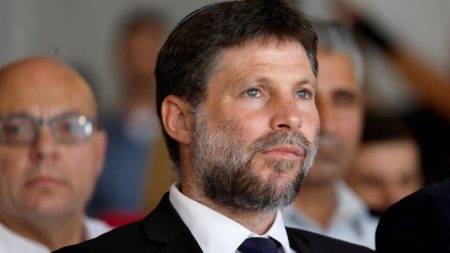Russia on Sunday launched dozens of missiles and drones in what Ukraine’s foreign minister said was one of the largest air attacks of the war, targeting power facilities across the country and sending Kyiv residents rushing to bomb shelters.
“A massive combined strike on all regions of Ukraine” took place overnight and into the morning, said President Volodymyr Zelenskyy.
Russia launched about 120 missiles and 90 drones, he said. Ukrainian air defences — including anti-aircraft missiles, mobile fire units, electronic warfare groups and western-supplied F-16 jets — took down more than 140 of them, he added.
Ukraine’s energy minister German Galushchenko said on Facebook that Russia’s assault on Sunday had targeted “electricity generation and transmission facilities throughout Ukraine”.
Russia’s defence ministry confirmed the attack, saying its forces had struck “all planned targets” including “critical energy infrastructure facilities” that “ensure the operation of Ukraine’s military-industrial complex”.
Emergency power shutdowns were implemented in several regions, said Galushchenko. Ukraine’s largest private energy company, DTEK, said the attack affected the regions of Donetsk, Dnipropetrovsk and Kyiv.
DTEK chief executive Maxim Timchenko said on social media site X that there had been “severe damage to Ukraine’s energy system, including to DTEK power stations”. The barrage marked the eighth attack on the company’s energy plants this year, it said.
Zelenskyy said that several parts of the country were without power, but that emergency crews were working to restore it.
“Efforts to address the consequences of the combined attack on our infrastructure . . . are ongoing,” he said, adding that regions affected spanned from Rivne in the north-west to Odesa in the south and Dnipropetrovsk in the south-east.
Russia has fired nearly 140 missiles of various types, more than 900 guided aerial bombs and over 600 attack drones at Ukraine in the past week, according to Zelenskyy.
Last month Ukraine and Russia sought to resume Qatar-mediated negotiations about halting strikes on each other’s energy infrastructure, people familiar with the matter told the Financial Times. Previous negotiations on the issue had come close to an agreement in August before being derailed by Ukraine’s incursion into Kursk, said those people.
Another person with knowledge of the talks said they had once again been suspended last week.
The attack on Sunday comes as both Ukraine and Russia battle for an advantage in the nearly three-year war before Donald Trump returns to the White House. The president-elect has vowed to force them into peace talks to bring Russia’s war to a swift end.
In the largest assault since late August, sirens blared in Kyiv through the night and into the morning, while text alerts from the air force warned of incoming ballistic missiles and Iranian-made Shahed suicide drones.
In response, the operational command of Nato member Poland’s armed forces wrote on X that Polish and allied jets had been scrambled “due to the massive attack by the Russian Federation using cruise missiles, ballistic missiles, and unmanned aerial vehicles on objects located, among others, in western Ukraine”.
Ukrainian authorities reported explosions and damage in about a dozen cities. In the southern city of Mykolayiv, two people were killed and six injured, including two children, Zelenskyy said.
Ukrainian foreign minister Andriy Sybiha condemned the attack, calling it “one of the largest air attacks” of the war, aimed at “peaceful cities, sleeping civilians, critical infrastructure”.
“This is war criminal [Russian President Vladimir] Putin’s true response to all those who called and visited him recently,” Sybiha added, appearing to criticise German Chancellor Olaf Scholz and other western leaders who recently engaged with the Russian president and urged him to end his war.
“We need peace through strength, not appeasement,” Sybiha added.
Ukraine had been on high alert for weeks, fearing that Moscow was stockpiling missiles in preparation for strikes on its energy infrastructure ahead of winter.

Following relentless waves of drone strikes in October — more than 2,000 were launched at Ukraine in total, and attacks took place every day but one — Russia had appeared to hold back its more advanced hypersonic and cruise missiles.
Earlier strikes on Ukraine’s critical infrastructure in March and April caused nationwide blackouts and destroyed 9GW of the country’s power generation capacity.
Before Sunday’s bombardment, the country was already facing a harsh winter. DTEK had estimated that in the best-case scenario, Ukraine could face an average of five hours of power outages per day, assuming that Russia refrained from further attacks and that temperatures did not fall below -15°C.
But authorities have warned the country could be forced to endure blackouts of up to 20 hours per day.
Timchenko said the latest assault “highlight[ed] Ukraine’s need for additional air defence systems from our allies to prevent more destruction. The supply of power to millions this winter depends upon it”.
Additional reporting by Anastasia Stognei in Berlin
Read the full article here













